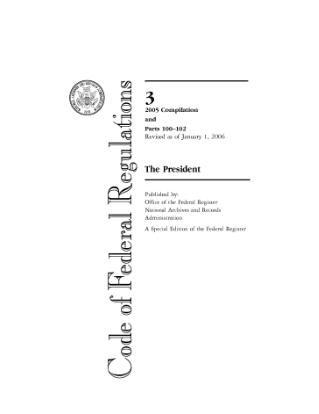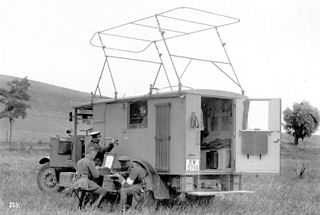Related Research Articles
The ISM radio bands are portions of the radio spectrum reserved internationally for industrial, scientific and medical (ISM) purposes, excluding applications in telecommunications. Examples of applications for the use of radio frequency (RF) energy in these bands include radio-frequency process heating, microwave ovens, and medical diathermy machines. The powerful emissions of these devices can create electromagnetic interference and disrupt radio communication using the same frequency, so these devices are limited to certain bands of frequencies. In general, communications equipment operating in ISM bands must tolerate any interference generated by ISM applications, and users have no regulatory protection from ISM device operation in these bands.
Title 47 CFR Part 68 is a section of the Code of Federal Regulations of the United States that regulate the direct electrical connection of telecommunications equipment and customer premises wiring with the public switched telephone network, certain private line services, and connection of private branch exchange (PBX) equipment to certain telecommunication interfaces.
In radio communication, a transceiver is an electronic device which is a combination of a radio transmitter and a receiver, hence the name. It can both transmit and receive radio waves using an antenna, for communication purposes. These two related functions are often combined in a single device to reduce manufacturing costs. The term is also used for other devices which can both transmit and receive through a communications channel, such as optical transceivers which transmit and receive light in optical fiber systems, and bus transceivers which transmit and receive digital data in computer data buses.

The Federal Communications Commission (FCC) is an independent agency of the United States federal government that regulates communications by radio, television, wire, satellite, and cable across the United States. The FCC maintains jurisdiction over the areas of broadband access, fair competition, radio frequency use, media responsibility, public safety, and homeland security.

The Communications Act of 1934 is a United States federal law signed by President Franklin D. Roosevelt on June 19, 1934 and codified as Chapter 5 of Title 47 of the United States Code, 47 U.S.C. § 151 et seq. The Act replaced the Federal Radio Commission with the Federal Communications Commission (FCC). It also transferred regulation of interstate telephone services from the Interstate Commerce Commission to the FCC.

The Telecommunications Act of 1996 is a United States federal law enacted by the 104th United States Congress on January 3, 1996, and signed into law on February 8, 1996, by President Bill Clinton. It primarily amended Chapter 5 of Title 47 of the United States Code,

Low-power broadcasting is broadcasting by a broadcast station at a low transmitter power output to a smaller service area than "full power" stations within the same region. It is often distinguished from "micropower broadcasting" and broadcast translators. LPAM, LPFM and LPTV are in various levels of use across the world, varying widely based on the laws and their enforcement.

Height above average terrain (HAAT), or effective height above average terrain (EHAAT), is the vertical position of an antenna site is above the surrounding landscape. HAAT is used extensively in FM radio and television, as it is more important than effective radiated power (ERP) in determining the range of broadcasts. For international coordination, it is officially measured in meters, even by the Federal Communications Commission in the United States, as Canada and Mexico have extensive border zones where stations can be received on either side of the international boundaries. Stations that want to increase above a certain HAAT must reduce their power accordingly, based on the maximum distance their station class is allowed to cover.
The basic exchange telephone radio service or BETRS is a fixed radio service where a multiplexed, digital radio link is used as the last segment of the local loop to provide wireless telephone service to subscribers in remote areas. BETRS technology was developed in the mid-1980s and allows up to four subscribers to use a single radio channel pair, simultaneously, without interfering with one another.

In the law of the United States, the Code of Federal Regulations (CFR) is the codification of the general and permanent regulations promulgated by the executive departments and agencies of the federal government of the United States. The CFR is divided into 50 titles that represent broad areas subject to federal regulation.

The General Mobile Radio Service (GMRS) is a land-mobile FM UHF radio service designed for short-distance two-way communication and authorized under part 95 of 47 USC. It requires a license in the United States, but some GMRS compatible equipment can be used license-free in Canada. The US GMRS license is issued for a period of 10 years by the FCC. The United States permits use by adult individuals who possess a valid GMRS license, as well as their immediate family members. Immediate relatives of the GMRS system licensee are entitled to communicate among themselves for personal or business purposes, but employees of the licensee who are not family members are not covered by the license. Non-family members must be licensed separately.
Code of Federal Regulations, Title 47, Part 15 is an oft-quoted part of Federal Communications Commission (FCC) rules and regulations regarding unlicensed transmissions. It is a part of Title 47 of the Code of Federal Regulations (CFR), and regulates everything from spurious emissions to unlicensed low-power broadcasting. Nearly every electronics device sold inside the United States radiates unintentional emissions, and must be reviewed to comply with Part 15 before it can be advertised or sold in the US market.
In the United States, the business band is the colloquial name used by radio users who utilize, and scanner hobbyists who listen to, the Federal Communications Commission (FCC) Industrial/Business pool frequencies. The regulations listing frequencies in this pool are contained in Subpart C of Part 90, Title 47 of the CFR.
In the United States, the Multi-Use Radio Service (MURS) is a licensed by rule two-way radio service similar to the Citizens band (CB). Established by the U.S. Federal Communications Commission in the fall of 2000, MURS created a radio service allowing for licensed by rule operation in a narrow selection of the VHF band, with a power limit of 2 watts. The FCC formally defines MURS as "a private, two-way, short-distance voice or data communications service for personal or business activities of the general public." MURS stations may not be connected to the public telephone network, may not be used for store and forward operations, and radio repeaters are not permitted.
In cable television, governments apply a must-carry regulation stating that locally licensed television stations must be carried on a cable provider's system.
The United States Federal Communications Commission uses the term instrument of authorization with its broadcast licensees. It may refer to:
In the U.S., Part 97 is the section of Federal Communications Commission (FCC) rules and regulations that pertains to amateur radio and the conduct of amateur radio operators. It is a part of Title 47 of the Code of Federal Regulations (CFR).

Land mobile service is – in line to ITU Radio Regulations – a mobile service between base stations and land mobile stations, or between land mobile stations.
The Digital Electronic Message Service (DEMS) is a two-way wireless radio service for passing of message and facsimile data using the 10.6 and 24 GHz band. As of 1997, Associated Communications was expected to use the band to create a network in 31 U.S. cities. In October 2005, the FCC moved part of the DEMS service from the 18/19 GHz band to 24 GHz.
Communications law refers to the regulation of electronic communications by wire or radio. It encompasses regulations governing broadcasting, telephone and telecommunications service, cable television, satellite communications, wireless telecommunications, and the Internet.